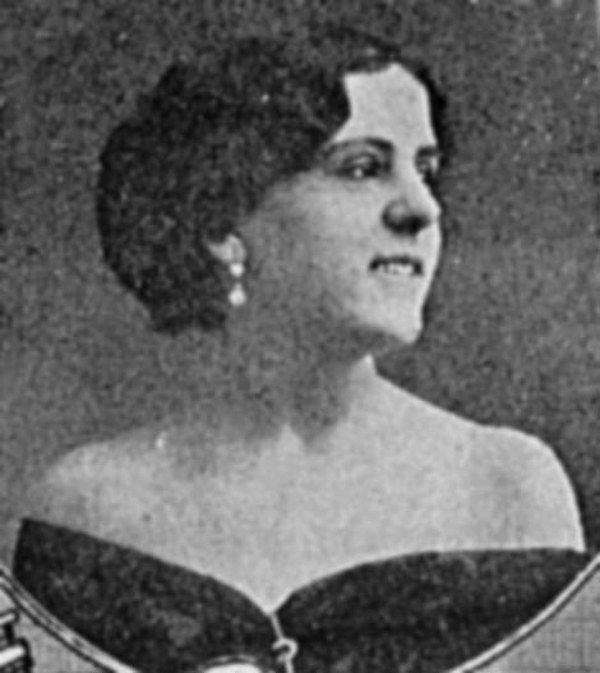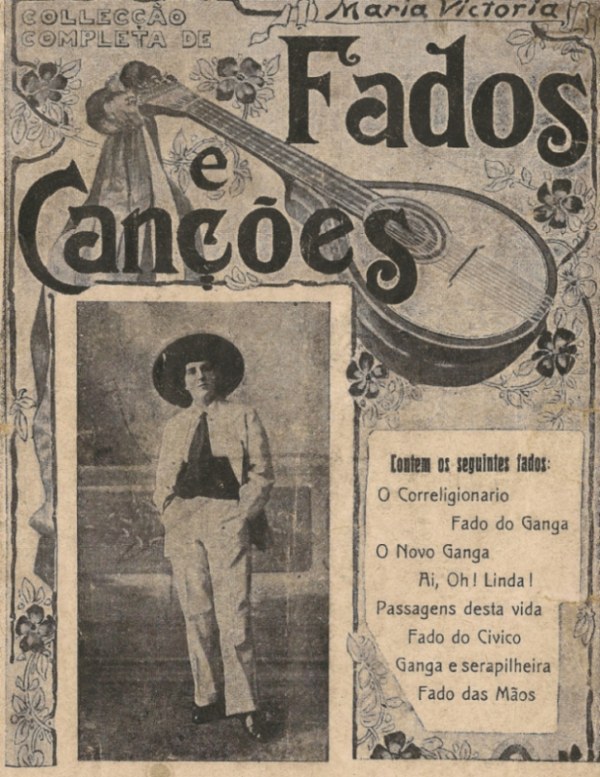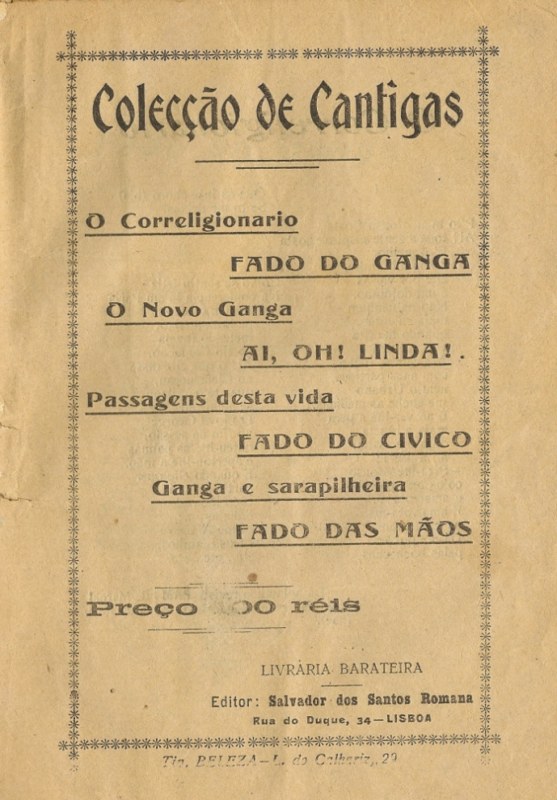Know more:
Maria Vitória
(N. 13 March, 1888 - M. 30 April, 1915)Daughter of Spanish parents and born in Spain, Maria Vitória retained nothing of “Spanish”. On the contrary, it was to fado, the so typically Portuguese song,that Maria Vitória committed herself to, reaching the greatest success of her short life. She died of tuberculosis in 1915. She was 27 years old.
In 1946, Avelino de Sousa would remember her again, writing her biography:
"Maria Vitória was of Spanish origin. She was born in the city of Málaga on the 13 March 1888 and came to Lisbon with her mother when she was very young. She was raised in a religious home and, being very intelligent, learned a lot in the convent; it was a shame that her restless spirit made her run away and thus she did not finish her education.
She was a brunette, with black eyes and very kind, but soon entered the Life, failing to enjoy the great love she felt for a handsome boy, the son of an old friend of us who fortunately stills lives, which is why we shall not print the name of the poor lad, who loved her passionately.”
A biographer of the miserable and kind Maria Vitória says: «her education’s religious background, a certain mysticism in her ways, combined with her sentimentality and sensuality, lead up to Fado».
One day she started singing Fado at the tavern Flor da Boémia, at Travessa da Espera nº 11, in the heart of Bairro Alto, owned by a certain Joaquim Rato, one of her lovers. At that timeduring her short life, there was a group of seducers surrounding her, boys of the time, more or less bohemian and frolickers, as young people usually are; and this love sentinels wanted to troop the colour in the headquarters of her heart; they were all in love with the gracious brunette with black eyes filled with mysticism and a sensual sentimentality which made her pretty because she was so kind.
She yarned to join the theatre. Contrary to some biographers, she did not debut as an actress at Salão Fantástico, in Rua Jardim do Regedor, but in the Casino de Santos, where the critic from Jornal Polichinelo claims to have seen her debut in 1908.
She then performed at Salão Fantástico and Rua do Condes, at which’s door, moved by jealousy, she got into a fight with another actress, also specialized in fado, although Maria Vitória was not comparable to her as a fado singer nor had the glory she reached in the theatre, because she was not a very good actress. But she was an artist and managed to succeed before the audience, who is the supreme judge.
Luís Galhardo, remarkable theatre man, was the one who best took advantage of her, especially in the vaudeville play "O 31", at Teatro Avenida, where she performed the roles of Estúrdia, Fado do 31, the Guines from the famous duet Arco de Santo André, Alzira Fadista, etc.
The poet and theatrical author Pereira Coelho - Colonel José Maria Pereira Coelho (one of the authors of the play “O 31”, among others, and current general-secretary of DN) wrote her, among others, this quatrain full of felling which she sang divinely:
With a restless temper, the kind actress only felt good in the places she was not, and one day, severely attacked by tuberculosis, she retreated to Caramulo Sanatorium, from where she also ran away, returning to theatre.
Finallyon the 30 April 1915, at 27 years old, the unfortunate girl fell to the illness, dying at her home, at Rua Neves Piedade, nº 1 RC.
Poor gentle little bird! ... She spent 7 years in the theatre, but this brief time was enough for her to conquer a name that still endures today, not only in the memory… but also in the little theatre with her name in Parque Mayer.
The poet Júlio Guimarães still remembers her dearly. As he lived in her building, at Rua das Pretas, he visited her often when he was only 12 years old. Maria Vitória played with him a lot and one day offered him a cigarette. It was Júlio Guimarães’ first and he still smokes today.
Maria Vitória was buried in the Benfica cemetery and, one day, that boy, her fist love, who never forgot her, arranged for her body to be transferred to the catacombs. When the body was exhumed, only one of her gold earrings appeared. Suspicions fell on the employees, since the body stayed there all night. The earring turned up in the middle of the poor Maria Vitória’s black hair. (…)
And the boy, her great love, also died of tuberculosis." (cf. Avelino de Sousa e Júlio Guimarães in Guitarra de Portugal, 1 October 1946)
Source:
“A Guitarra de Portugal”, 30 November 1927


Fascículo | Volume Colecção Completa de Fados e Canções, Maria Victoria, s/d
